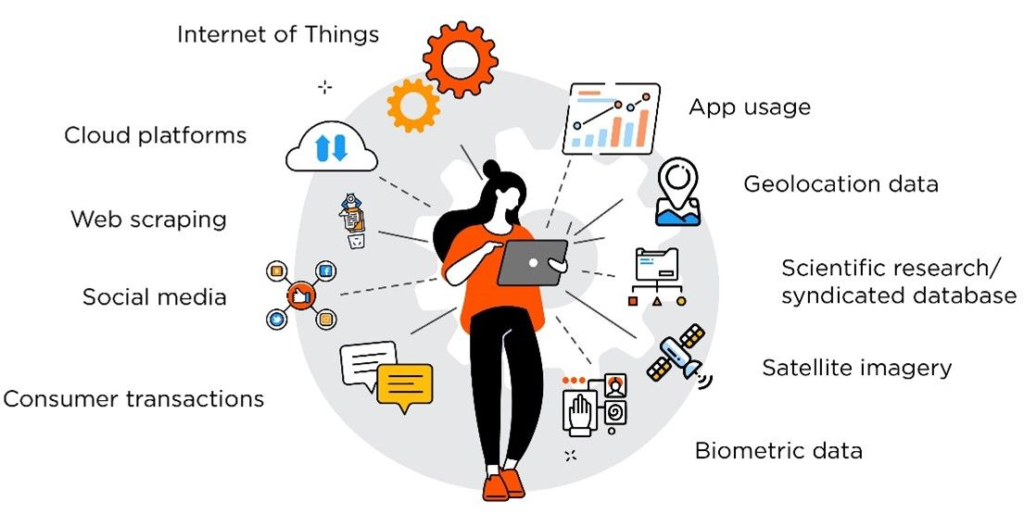Alternative data includes non-structured data that is publicly available and accessible from various data sources such as social media, e-commerce transactions, and government records.The media industry is undergoing a digital transformation, with the proliferation of new technologies and platforms that have changed the way content is created, distributed, and consumed. As a result, media companies and publishers are turning to data sources to gain a competitive edge and stay ahead of the curve.

Using Alternative Data in Media
Media companies are using alternative data to gain insights into consumer behavior, content consumption patterns, and audience engagement.
Why Alternative Data Matters in Media
It is important to the media industry because it provides a competitive edge in an increasingly crowded and complex market. By using alternative data, media companies can gain a deeper understanding of their audience, identify emerging trends, and make data-driven decisions about content creation and distribution. This can lead to higher engagement rates, increased audience loyalty, and improved monetisation strategies. In addition, alternative data can help media companies stay ahead of the curve and adapt to changing market conditions
Challenges in Using Alternative Data
While alternative data provides valuable insights, it also poses challenges to media companies. For example, alternative data can be unstructured and difficult to analyze, requiring specialised skills and tools. In addition, the use of alternative data raises ethical concerns about privacy and data protection.
UBS Evidence Lab
One provider of alternative data is UBS Evidence Lab. UBS Evidence Lab offers an extensive range of data sets, including web scraping, credit card transactions, and satellite imagery. They also provide customised research reports that help media companies make data-driven decisions about content creation, distribution, and magnetisation.
1010Data
Another provider of alternative data is 1010Data. They specialise in aggregating credit card data from third-party providers. Their data sources include a Yodlee panel, which aggregates data from thousands of financial institutions. 1010Data also specializes in aggregating, analyzing, and visualising complex data sets, and their platform is designed to handle large volumes of data in real-time. Media companies can use 1010Data to gain insights into consumer spending habits, purchasing patterns, and other trends that can inform content creation, distribution, and advertising strategies.
Conclusion
In conclusion, alternative data is a game-changer for the industry. By leveraging non-traditional data sources, media companies can gain unique insights into their audience, content consumption patterns, and emerging trends.